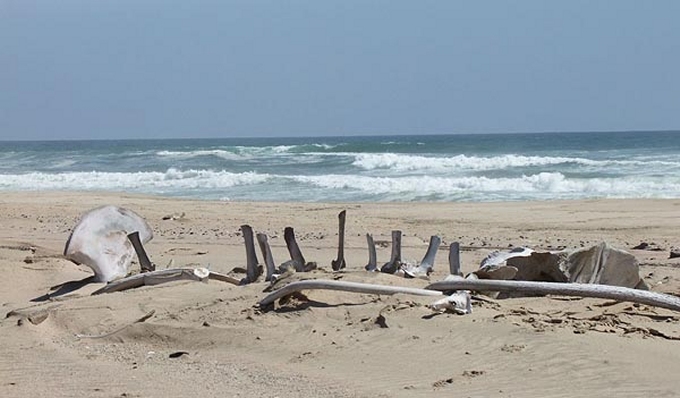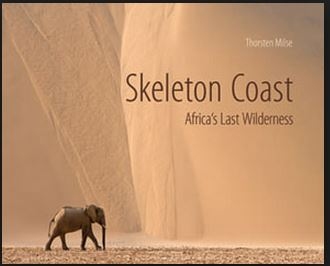Namibia's Skeleton Coast
/We had originally planned to head north to Walvis Bay before leaving Namibia, but as you know, plans change. We dawdled just a bit too long in lovely Lüderitz and now it's time to get out of Dodge and head across the pond. The coast between Lüderitz north up to Angola is referred to as the Skeleton Coast and though we're only traveling a short distance along it, I thought you might be interested in learning more about this infamous stretch of water.

The San people (aka the Bushmen) called the interior desert area "The land the gods made in anger”. The Portuguese explorers sometimes referred to it as "The Gates of Hell". The actual reference to Skeleton Coast was popularized by the title of a 1944 chronicle by John Henry Marsh which described the wreck of Dunedin Star. The name stuck and most maps use this name today and, in fact, Skeleton Coast National Park runs along the Namibian coast nearly up to the Angolan border.
When the cold Benguela current air mixes with the hot, dry desert air, dense fog frequently occurs. We've seen this in Lüderitz a number of times. You can barely seen the bow of the boat sometimes. Further north, the climate becomes more and more inhospitable. There's heavy surf and surge and few places to land. Before engine-power, if a boat did manage to get ashore, it would be near impossible to launch it again. Shipwrecks were frequent and when we visited the coast by land back in 2007, we saw several of them. There are reputedly thousands of shipwrecks along this coast. Probably the most famous is the Edward Bohlen, a German freighter that sank in 1907. It's not accessible by car. The desert has slowly merged with the sea and now the ship appears to have foundered in the desert sands.
The Skeleton Coast derives its name not only from shipwrecks, however. In the whaling days, the coast was littered with whale and seal bones.
Inland, desert lions and elephants and other animals that have adapted to this dry, hot environment still roam wild. The Safari shop in Luderitz has an extensive book collection on offer and one in particular was amazing... Skeleton Coast by Thorsten Milse. The photography was out of this world.
If you were aboard a shipwrecked vessel and were fortunate enough to make it ashore, your ordeal was just beginning. You would have to get through hundreds of miles of lion infested desert to get to the nearest town - not a pleasant prospect. Perhaps this was another reason it was called the Skeleton Coast.
There's a 1965 National Geographic documentary "Survivors Of The Skeleton Coast" that might be worth a watch if you're interested.
I know we can't go everywhere, every time … but I can wish, can't I?




